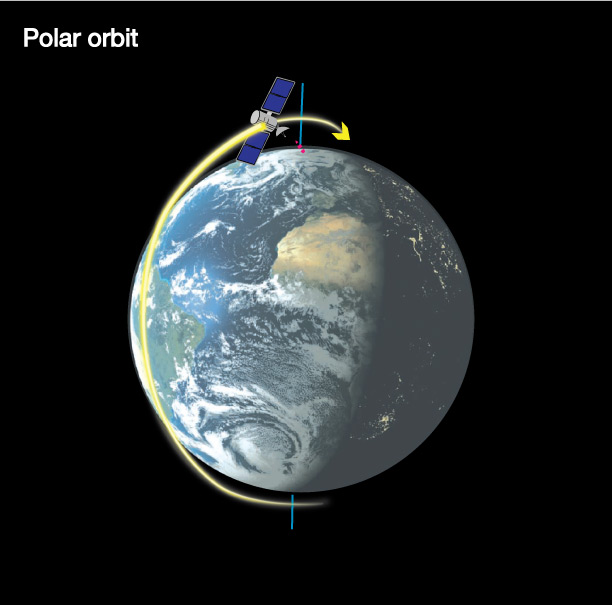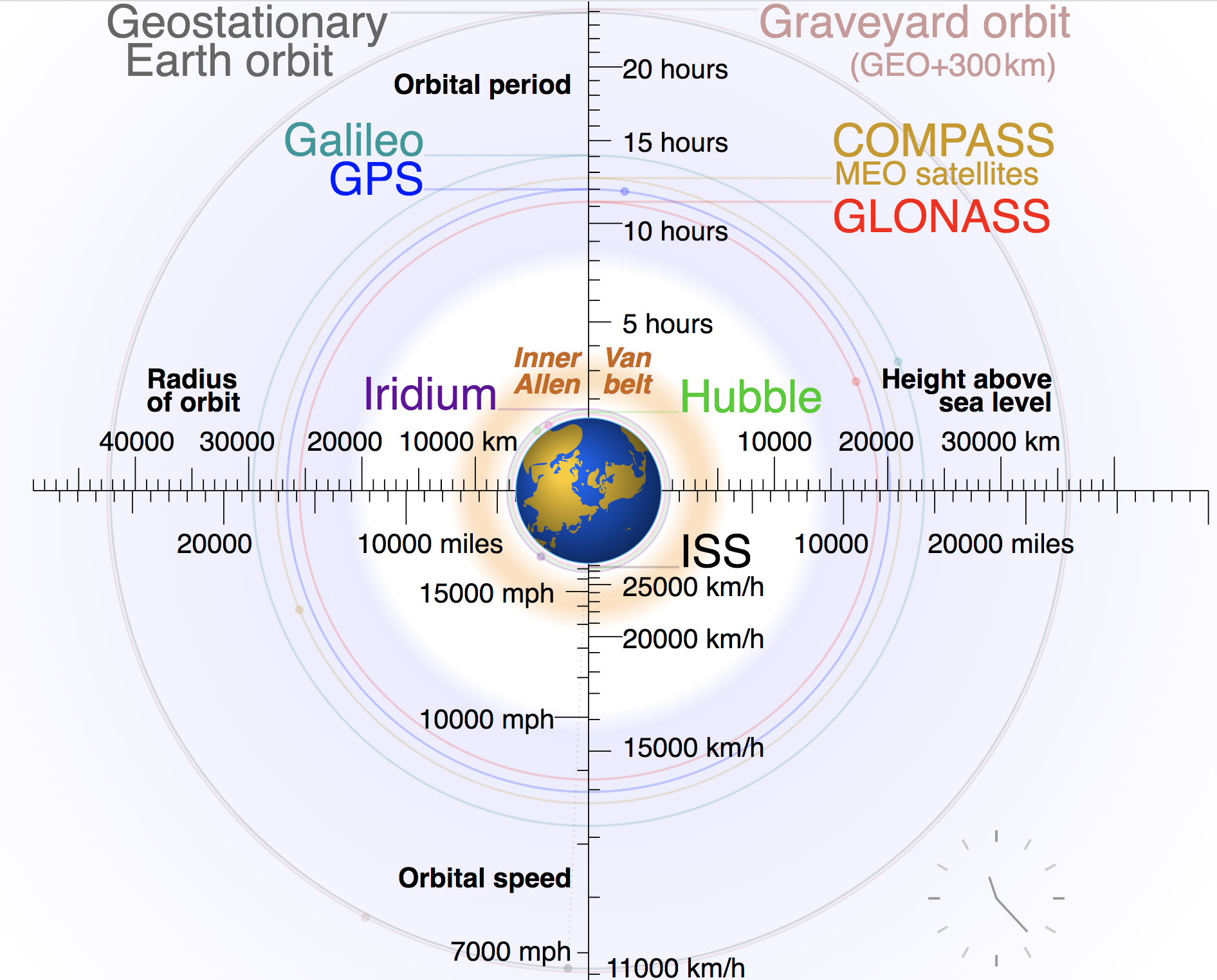What about Satellites?
Although all “distant celestial objects” must rise in the east and set in the west, you may recall from Chapter 2 that it is possible for artificial satellites to do the opposite. But why? The answer lies with the time it takes satellites to orbit Earth.
Remember that it is Earth’s rotation, not any real motion of celestial objects, that explains why all “distant celestial objects” rise in the east and set in the west. This is true even for the Moon, because even though the Moon is orbiting Earth, it takes the Moon much longer than day (recall that it takes nearly a month) to complete one orbit.
The situation can be different for artificial satellites, which are human-made spacecraft that have been launched into orbit around Earth. Most satellites are launched into orbits that go around Earth in the same direction that Earth rotates. However, many of these go around faster than Earth rotates. For example, satellites in low-Earth orbit, such as the International Space Station, complete an orbit in only about 90 minutes, which means they are “outracing” Earth’s rotation.
Think now about what you see if you are in the passenger seat of a car and focus on another car as you approach and pass it on the freeway. Even though the other car is going in the same direction as you, your faster speed will make it appear to be moving backward relative to you.
In the same way, the fact that satellites in low-Earth orbit are going faster than Earth is rotating will make them appear to go backward (west to east) across our sky. You can often see this in the night sky, because many satellites in low-Earth orbit reflect enough sunlight to be visible to the naked eye when they are near the horizon. (They tend to disappear from view as they go higher overhead, because they are then in Earth’s shadow so that no sunlight reflects off of them.)
Interestingly, the planet Mars has a similar case with the larger of its two moons, Phobos. Phobos orbits Mars in less time than a Martian day. Therefore, even though all other celestial objects rise in the east and set in the west on Mars just as on Earth, Phobos does the opposite, traveling west to east across the Martian sky.
Note that not all artificial satellites are in low-Earth orbit (where we can see their reflected light) and not all orbit in the same direction that Earth rotates. Three other common cases are the following:
- Medium altitude orbits: Some satellites, including those of the Global Positioning System (GPS), orbit at much higher altitudes than low-Earth orbit, but still low enough that they orbit faster than Earth rotates. These satellites are generally not visible because they are too far away.
- Geostationary orbit: This is an orbit above Earth’s equator at an altitude of about 36,000 kilometers, which is the altitude at which a satellite’s orbital period will match Earth’s rotation period. As a result, satellites in geostationary orbit always remain above the same point on Earth’s surface. Most communications satellites are in geostationary orbits, and this is why satellite dishes can remain pointed in the same direction (toward a particular satellite) at all times.
- Polar orbits: These are orbits that go around Earth’s north and south poles. As Earth rotates, a satellite with a polar orbit will pass over different portions of Earth (different longitude) with each orbit. Polar orbits are therefore particularly useful for satellites that seek to study the whole planet, because they are the only satellites that will repeatedly pass over every point on Earth.



The following animation shows how a satellite’s orbital speed and orbital period depends on its altitude. Be sure to notice that the satellites in low-Earth orbit are moving much faster than Earth is rotating. Also notice that the outermost circle shows a geostationary orbit that always remains above the same point on Earth’s surface. (Note: the “radius of orbit” shown in the animation is the distance from the center of the Earth, rather than the altitude above Earth’s surface.)
